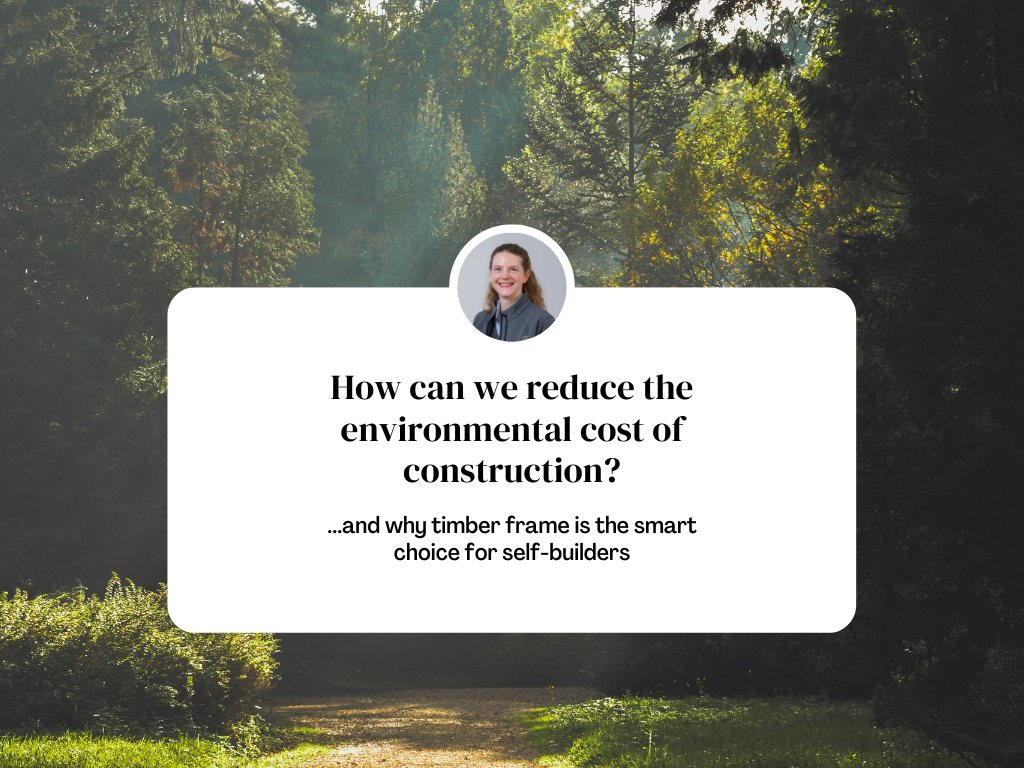Carbon Capture and Storage

The Heatwaves faced by the UK this summer has brought home the environmental challenges we are facing as global temperatures rise. How can we reduce the environmental cost of construction by capturing carbon when self-building?
A timber frame structural system consists of timber panels with timber studs in the external walls to transmit loads to the foundations. At the same time, the timber is also capturing carbon and storing it in your home, talk about multi-tasking! We are all searching for what we can do to reduce our carbon footprint, from re-useable coffee cups to electric cars. The construction industry can also offer ways to be more environmentally sustainable. As we experience the effects of climate change here in the UK, pressure is growing on the construction industry to find alternative and sustainable ways of building homes.
Wood removes more CO2 from the atmosphere than it emits during the manufacturing process. This delivers a lasting effect, with timber capturing carbon and storing it until the end of its physical life. If you then consider insulating products, your home can be turbo-charged with efficiencies from the start of your build. These are just a few of the benefits of timber frame construction.
Timber structures allow carbon (contributing to climate change) to be taken from the air and stored in the structure of your home. The ability to build more of a dwelling out of timber increases your property’s capability to capture carbon; timber frames encompass timber external and internal walls, as well as timber roof trusses and floor joists. As we grow more trees for timber construction, additional carbon capture occurs, and the cycle continues.
The use of sustainable timber in construction has been recognised as one of the best methods of reducing carbon emissions and studies show that using timber frames instead of masonry can reduce carbon embodied emissions by around 20% per building.
Sourcing timber from well-managed and sustainable forests is just one step towards sustainability. The off-site manufacture of timber frame leads to a reduction in construction waste. With the building industry contributing around 32% of all waste nationally (BRE 2006) designing and building homes that create less waste is critical for the planet. A timber frame made within a factory environment can reduce the waste generated on-site by up to 40%. And the majority of timber frame waste can be recovered or recycled, all contributing to a more sustainable method of building homes.
As pressure increases for the UK to address housing shortages and climate change, building with timber frame is an effective way to achieve more high-quality homes quickly. Modern methods of construction (MMC), like those used by Fleming Homes, are key to driving change in the way we build houses more sustainably. In addition to benefits such as quality assurance and the efficient use of raw materials that can positively impact your budget, you also get to feel good about building responsibly in the face of climate change.
Article Archives
- 31 January Get Started with your Self-Build Design
- 11 October Making self-build more straightforward
- 13 March NSBRC Building Systems Workshop
- 03 March Self-Build Pre Planning Advice
- 07 December External Wall Build Ups Explained
- 19 October NaCSBA’s Custom and Self Build Conference
- 22 September Our Saltire Scholar 2022
- 21 September Planning permission explained
- 23 August Fundraising for Marie Curie
- 17 August Carbon Capture and Storage
- 15 March The Case for Project Management
- 03 February Financing your self-build with a mortgage
- 15 October Custom Build Collaboration for West Cumbria
- 17 March Tackling timber frame terminology
- 06 October Exhibitors and experts line up at the NSBRC
- 26 March Tips for working from home
- 16 November Top Tips When Planning Your Build
- 25 September Is timber frame the same as a pre-fab?
- 09 April Boost Your Self-Build Knowledge
- 08 February Can a timber frame home stand the test of time?
- 15 January Self-build mortgages: what you need to know
- 23 February Cut on-site costs with FIT pre-insulated panels
- 03 January Bespoke self-build checklist
- 07 November Custom build vs self-build
- 07 April The three timber frame build routes
- 10 August A Scottish model for an English market
- 18 September 3 essentials for self-build success